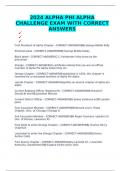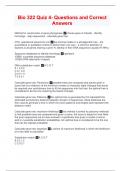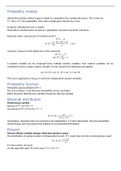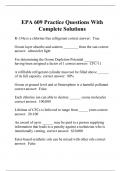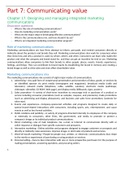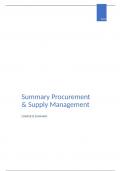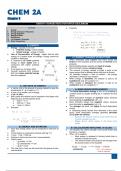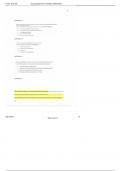Unit 15 – Electrical Circuits and their Applications
AC/DC
,Section 1 AC and DC current
Comparison chart between AC and DC
Alternating current Direct current
The amount of energy that can “Safe to transfer over longer “Voltage of DC cannot travel
be carried city distances and can provide very far until it begins to lose
more power.” energy.”
The cause of the direction of “Rotating magnet along the “Steady magnetism along the
flow of electrons wire.” wire.”
Frequency “The frequency of alternating “The frequency of direct
current is 50Hz or 60Hz current is zero.”
depending upon the country.”
Direction “It reverses its direction while “It flows in one direction in the
flowing in a circuit.” circuit.”
Current “It is the current of magnitude “It is the current of constant
varying with time.” magnitude.”
Flow of electrons “Electrons keep switching “Electrons move steadily in
directions - forward and one direction or 'forward'.”
backward.”
Obtained from “A.C Generator and mains.” “Cell or Battery.”
Passive Parameters “Impedance.” “Resistance only.”
Power Factor “Lies between 0 & 1.” “it is always 1.”
Types “Sinusoidal, Trapezoidal, “Pure and pulsating.”
Triangular, Square.”
https://www.diffen.com/difference/Alternating_Current_vs_Direct_Current
,Similarities and differences of the properties of AC and DC in simple circuits
An alternating current (AC) is an electrical current that reverses its direction many times, which is
normally used in power supplies and is a main supply of energy. A direct current (DC) is an electric
current which flows in one direction, a DC contains batteries whereas an AC does not. Examples of
AC currents are bedside lamps, wall clocks, radios and microwaves examples of DC are digital clocks,
and tv remotes. The voltage of an AC current follows its pattern, as it rises to a peak and returns to
zero changes direction whereas, the voltage of a DC supply is steady and always in the direction.
The main difference between an alternating current and a direct is that it that a DC only flows in one
direction, and an AC current changes direction periodically. In an AC current, electrons flow
backwards or forwards, AC currents are generated from AC generators and mains and the frequency
of an AC current is 50Hz whereas in a direct current, electrons flow steadily in one direction, a direct
current is obtained from cells or batteries and the frequency of a direct current is zero. AC and DC
currents result from inducing charge to move through wires, they do this to transmit electrical
energy and use it to power various devices. In a direct current, negative electrons are made to flow
in a single direction. Both AC and DC currents use electrons as the charge carries in the current,
which transport energy in doing so, this gives off waste energy as they pass through circuit elements.
How ac and dc generators are made
An alternating current generator (AC generator) is driven by a steam turbine and diesel engine which
drives the flow of water the flow of air. The energy which is generated by fuel combustion is
converted into mechanical energy to be transmitted to generators and then converted from
generators to electrical energy. To operate an electrical motor, we use Flemings left hand rule where
the index finger represents the magnetic field, the second finger represents the direction of the
current and the thumb represents the direction of movement.
“A DC Generator is an electrical device which converts mechanical energy into electrical energy. It
mainly consists of three main parts, i.e. Magnetic field system, Armature and Commutator and Brush
gear. The other parts of a DC Generator are Magnetic frame and Yoke, Pole Core and Pole Shoes,
Field or Exciting coils, Armature Core and Windings, Brushes, End housings, Bearings and Shafts.”
,Fleming rules
The motor effect is when two magnetic fields combine and a force is exerted, “one magnet exerts a
force (attractive or repulsive) on the other. It uses the equation F=BIL where F= the force on the wire
(N), I=current (A), B=magnetic field strength (T) and L=length of wire (m). The index finger represents
the magnetic field, the second finger represents the direction of the current and the thumb
represents the direction of movement, where the wire will experience a force. A wire that carries a
current through a magnetic field will experience a force.
https://www.google.com/search?
q=fleming+left+hand&sxsrf=ALeKk01dsHoJtRZVLg5poXEEjn5IjjBCDA:1585416764603&source=lnms&
tbm=isch&sa=X&ved=2ahUKEwibwczY2b3oAhWZUhUIHVPTCXsQ_AUoAXoECA8QAw&biw=1920&bi
h=1091&dpr=1.13#imgrc=zi4mo4MQNCJevM
Flemings right hand rule
“Flemings right hand is used to determine the direction of the induced current in the conductor,
when a conductor moves in a region of magnetic field.” To explain the principles of a DC generator,
we use Flemings right hand rule. This rule shows the direction of induced current when a conductor
attached to a circuit moves in a magnetic field. A direct currents energy can be stored in a capacitor
and rechargeable battery.
, Section 2 Effects of AC and DC electricity on the human body
The graph shows the pathways in the
body, when humans are
electrocuted, they become part of
the electric current and the circuits
cause their own internal “electricity”
to begin flowing fast.
Implications of current pathways in the body
The human body can store an electric charge if insulated properly, the capacitance of the human
body in normal surroundings is 10-105pF. The reasons why an electric current is dangerous to the
human body is because if it passes through the head or thorax, this will produce serious injury,
respiratory arrest, and paralysis.
Dangers of working with electricity
The main hazards of working with electricity are burns from contact with live parts, electric shocks,
injuries from exposure of arcing and explosions which can be caused by unsuitable electrical
apparatus or static electricity igniting flammable vapours. Electric shocks are caused by electricity
AC/DC
,Section 1 AC and DC current
Comparison chart between AC and DC
Alternating current Direct current
The amount of energy that can “Safe to transfer over longer “Voltage of DC cannot travel
be carried city distances and can provide very far until it begins to lose
more power.” energy.”
The cause of the direction of “Rotating magnet along the “Steady magnetism along the
flow of electrons wire.” wire.”
Frequency “The frequency of alternating “The frequency of direct
current is 50Hz or 60Hz current is zero.”
depending upon the country.”
Direction “It reverses its direction while “It flows in one direction in the
flowing in a circuit.” circuit.”
Current “It is the current of magnitude “It is the current of constant
varying with time.” magnitude.”
Flow of electrons “Electrons keep switching “Electrons move steadily in
directions - forward and one direction or 'forward'.”
backward.”
Obtained from “A.C Generator and mains.” “Cell or Battery.”
Passive Parameters “Impedance.” “Resistance only.”
Power Factor “Lies between 0 & 1.” “it is always 1.”
Types “Sinusoidal, Trapezoidal, “Pure and pulsating.”
Triangular, Square.”
https://www.diffen.com/difference/Alternating_Current_vs_Direct_Current
,Similarities and differences of the properties of AC and DC in simple circuits
An alternating current (AC) is an electrical current that reverses its direction many times, which is
normally used in power supplies and is a main supply of energy. A direct current (DC) is an electric
current which flows in one direction, a DC contains batteries whereas an AC does not. Examples of
AC currents are bedside lamps, wall clocks, radios and microwaves examples of DC are digital clocks,
and tv remotes. The voltage of an AC current follows its pattern, as it rises to a peak and returns to
zero changes direction whereas, the voltage of a DC supply is steady and always in the direction.
The main difference between an alternating current and a direct is that it that a DC only flows in one
direction, and an AC current changes direction periodically. In an AC current, electrons flow
backwards or forwards, AC currents are generated from AC generators and mains and the frequency
of an AC current is 50Hz whereas in a direct current, electrons flow steadily in one direction, a direct
current is obtained from cells or batteries and the frequency of a direct current is zero. AC and DC
currents result from inducing charge to move through wires, they do this to transmit electrical
energy and use it to power various devices. In a direct current, negative electrons are made to flow
in a single direction. Both AC and DC currents use electrons as the charge carries in the current,
which transport energy in doing so, this gives off waste energy as they pass through circuit elements.
How ac and dc generators are made
An alternating current generator (AC generator) is driven by a steam turbine and diesel engine which
drives the flow of water the flow of air. The energy which is generated by fuel combustion is
converted into mechanical energy to be transmitted to generators and then converted from
generators to electrical energy. To operate an electrical motor, we use Flemings left hand rule where
the index finger represents the magnetic field, the second finger represents the direction of the
current and the thumb represents the direction of movement.
“A DC Generator is an electrical device which converts mechanical energy into electrical energy. It
mainly consists of three main parts, i.e. Magnetic field system, Armature and Commutator and Brush
gear. The other parts of a DC Generator are Magnetic frame and Yoke, Pole Core and Pole Shoes,
Field or Exciting coils, Armature Core and Windings, Brushes, End housings, Bearings and Shafts.”
,Fleming rules
The motor effect is when two magnetic fields combine and a force is exerted, “one magnet exerts a
force (attractive or repulsive) on the other. It uses the equation F=BIL where F= the force on the wire
(N), I=current (A), B=magnetic field strength (T) and L=length of wire (m). The index finger represents
the magnetic field, the second finger represents the direction of the current and the thumb
represents the direction of movement, where the wire will experience a force. A wire that carries a
current through a magnetic field will experience a force.
https://www.google.com/search?
q=fleming+left+hand&sxsrf=ALeKk01dsHoJtRZVLg5poXEEjn5IjjBCDA:1585416764603&source=lnms&
tbm=isch&sa=X&ved=2ahUKEwibwczY2b3oAhWZUhUIHVPTCXsQ_AUoAXoECA8QAw&biw=1920&bi
h=1091&dpr=1.13#imgrc=zi4mo4MQNCJevM
Flemings right hand rule
“Flemings right hand is used to determine the direction of the induced current in the conductor,
when a conductor moves in a region of magnetic field.” To explain the principles of a DC generator,
we use Flemings right hand rule. This rule shows the direction of induced current when a conductor
attached to a circuit moves in a magnetic field. A direct currents energy can be stored in a capacitor
and rechargeable battery.
, Section 2 Effects of AC and DC electricity on the human body
The graph shows the pathways in the
body, when humans are
electrocuted, they become part of
the electric current and the circuits
cause their own internal “electricity”
to begin flowing fast.
Implications of current pathways in the body
The human body can store an electric charge if insulated properly, the capacitance of the human
body in normal surroundings is 10-105pF. The reasons why an electric current is dangerous to the
human body is because if it passes through the head or thorax, this will produce serious injury,
respiratory arrest, and paralysis.
Dangers of working with electricity
The main hazards of working with electricity are burns from contact with live parts, electric shocks,
injuries from exposure of arcing and explosions which can be caused by unsuitable electrical
apparatus or static electricity igniting flammable vapours. Electric shocks are caused by electricity

